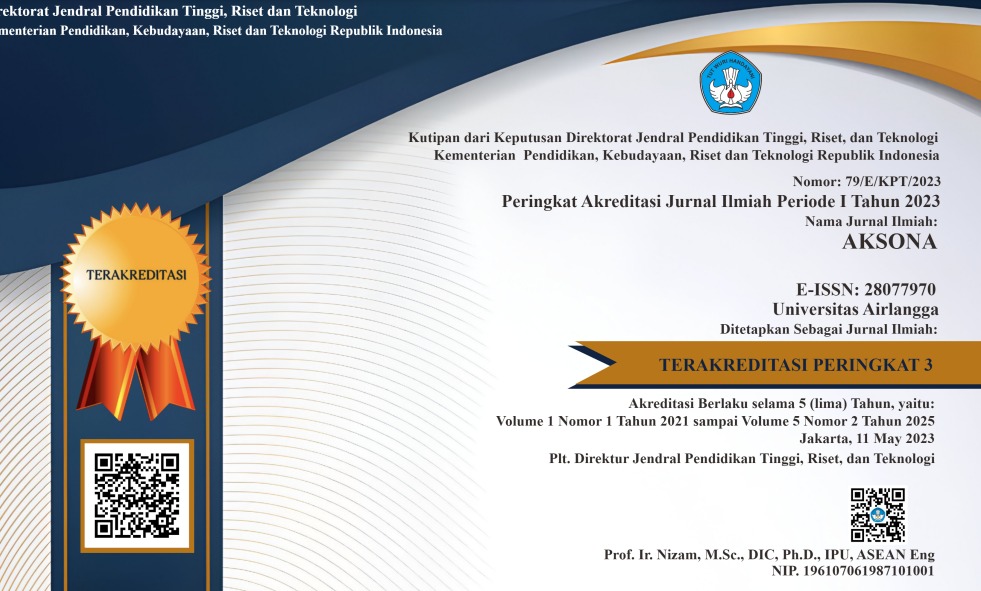Electroencephalogram in Children who Experienced First Unprovoked Seizure
Downloads
Highlight:
- Epiletiform abnormalities on the EEG provide additional clinical infromation about seizures
- The majority of patients who have a first unprovoked seizure have an abnormal EEG (Abnormal II).
- Using EEG as a supporting diagnostic tool in patients experiencing their first unprovoked seizures may provide more information to improve treatment
ABSTRACT
Introduction: The first unprovoked seizure is defined as a series of seizures that occur within 24 hours and are followed by recovery of consciousness with unknown triggering causes such as head trauma, central nervous system infections, tumors, or hypoglycemia. The first unprovoked seizure is a thing that cannot be underestimated. According to a previous study, less than half of those who experience their first unprovoked seizure will have another. An electroencephalogram (EEG) is one of the supporting examinations for the first unprovoked seizure. Objective: This study aims to determine the EEG as the first unprovoked seizure supporting examination. Methods: This is a retrospective, descriptive, observational study with sampling from the patient's medical record at Dr. Soetomo General Hospital Surabaya from January 2017 to December 2018 based on predetermined inclusion and exclusion criteria. Results: The EEG results in children who experienced their first unprovoked seizure were more abnormal (52.9%) than normal (47.1%), with an abnormal EEG breakdown of abnormal II (17.6%) and abnormal III (35.3%). There were no patients in this study who had EEG abnormal I. All patients with EEG abnormal II (17.6%) had an intermittent slow EEG waveform, while all patients with EEG abnormal III (35.3%) had a sharp waveform. The most common location of EEG wave abnormalities was temporal (55.6%). Conclusion: In the first unprovoked seizure, an EEG examination can assist clinicians as a seizure diagnostic assistant tool. It is hoped that the results of the EEG can provide better management of the first unprovoked seizure.
Hirtz D, Ashwal S, Berg A, Bettis D, Camfield C, Camfield P, et al. Practice parameter: Evaluating a first nonfebrile seizure in children: Report of the quality standards subcommittee of the American Academy of Neurology, the Child Neurology Society, and the American Epilepsy Society. Neurology. 2000;55(5):616–23.
Sadeq H, Karim J, Marwan Y, AlSaleem T. Neuroimaging evaluation for first attack of unprovoked nonfebrile seizure in pediatrics: When to order? Med Princ Pract. 2016;25(1):56–60.
Sansevere AJ, Avalone J, Strauss LD, Patel AA, Pinto A, Ramachandran M, et al. Diagnostic and therapeutic management of a first unprovoked seizure in children and adolescents with a focus on the revised diagnostic criteria for epilepsy. J Child Neurol. 2017 ;32(8):774–88.
Debicki DB. Electroencephalography after a single unprovoked seizure. Seizure. 2017;49:69–73.
Baldin E, Hauser WA, Buchhalter JR, Hesdorffer DC, Ottman R. Yield of epileptiform electroencephalogram abnormalities in incident unprovoked seizures: A population-based study. Epilepsia. 2014;55(9):1389–98.
Chen T, Si Y, Chen D, Zhu L, Xu D, Chen S, et al. The value of 24-hour video-EEG in evaluating recurrence risk following a first unprovoked seizure: A prospective study. Seizure. 2016 ;40:46–51.
Hauser WA, Beghi E. First seizure definitions and worldwide incidence and mortality. Epilepsia. 2008;49(1):8–12.
Daoud A, Ajloni S , El-Salem K, Horani K, Otoom S, Daradkeh T. Risk of seizure recurrence after a first unprovoked seizure: a prospective study among Jordanian children. Seizure. 2004 Mar;13(2):99–103.
Maia C, Moreira AR, Lopes T, Martins C. Risk of recurrence after a first unprovoked seizure in children. J Pediatr (Rio J). 2017;93(3):281–6.
Kipnis PA, Sullivan BJ, Kadam SD. Sex-dependent signaling pathways underlying seizure susceptibility and the role of chloride cotransporters. Cells. 2019;8(5):448.
Chan D, Phuah HK, Ng YL, Choong CT, Lim KW, Goh WHS. Pediatric epilepsy and first afebrile seizure in singapore: Epidemiology and investigation yield at presentation. J Child Neurol. 2010;25(10):1216–22.
Stafstrom CE, Carmant L. Seizures and epilepsy: An overview for neuroscientists. Cold Spring Harb Perspect Med. 2015;5(6):a022426.
Ghofrani M. Approach to the first unprovoked seizure- Part II. Iran J child Neurol. 2013;7(4):1–5.
Mizorogi S, Kanemura H, Sano F, Sugita K, Aihara M. Risk factors for seizure recurrence in children after first unprovoked seizure. Pediatr Int. 2015;57(4):665–9.
Dusitanond P. Abnormal electroencephalography in first unprovoked seizure in Rajavithi Hospital. J Med Assoc Thai. 2013;96 Suppl 3:S42-6.
Pereira C, Resende C, Fineza I, Robalo C. A 15-year follow-up of first unprovoked seizures: A prospective study of 200 children. Epileptic Disord. 2014;16(1):50–5.
Bhuyan R, Jahan W, Upadhyaya N. Interictal wave pattern study in EEG of epilepsy patients. Int J Res Med Sci. 2017;5(8):3378–84.
Jomaa NA, Haddad M, Adwane GY, Zaylaa AJ, Rahbani A. Dedicated magnetic resonance imaging sequences: Contribution in the diagnosis of focal epilepsy in the Lebanese population. J Heal Sci. 2018;6(6):439–45.
Copyright (c) 2022 Arinda Putri Auna Vanadia, Prastiya Indra Gunawan, Abdurachman Abdurachman, Martono Tri Utomo, Hanik Badriyah Hidayati

This work is licensed under a Creative Commons Attribution-ShareAlike 4.0 International License.





















